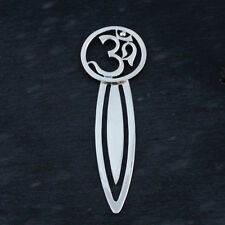Om Symbol: A Comprehensive Guide
The Om symbol, often depicted as a Sanskrit syllable “Aum,” holds significant importance in various cultures and spiritual practices. This article delves into the multifaceted aspects of the Om symbol, exploring its origins, meanings, and its presence in different cultures.
Origins of the Om Symbol

The Om symbol has its roots in ancient Indian culture, particularly in Hinduism, Buddhism, and Jainism. It is believed to be one of the oldest symbols in the world, with its origins dating back to the Vedic period, around 1500-500 BCE. The symbol is often found in ancient texts, temples, and religious artifacts.
Meanings of the Om Symbol

The Om symbol is considered to be a sacred sound that represents the universe. It is often chanted during meditation, yoga, and other spiritual practices. Here are some of the meanings associated with the Om symbol:
- Creation: Om is believed to be the sound of the universe being created. It represents the beginning of existence.
- Preservation: The second part of Om, “U,” represents the preservation of the universe. It signifies the ongoing existence and continuity of life.
- Destruction: The third part of Om, “M,” represents the destruction of the universe. It signifies the end of existence and the cycle of creation and destruction.
- Transformation: The entire Om symbol represents the transformation of the universe, from creation to preservation, and finally to destruction.
Om Symbol in Hinduism

In Hinduism, the Om symbol is considered to be the most sacred sound and is often used in various religious rituals and ceremonies. It is believed to be the source of all creation and is associated with the divine. Here are some ways in which the Om symbol is used in Hinduism:
- Mandir: The Om symbol is often found in the entrance of Hindu temples, symbolizing the presence of the divine.
- Mantras: Om is used as a prefix to many mantras, which are sacred chants used for meditation and spiritual practices.
- Yoga: Om is chanted during yoga sessions to help focus the mind and create a sense of unity with the universe.
Om Symbol in Buddhism
In Buddhism, the Om symbol is also considered to be sacred and is used in various rituals and practices. It represents the Buddha’s teachings and the path to enlightenment. Here are some ways in which the Om symbol is used in Buddhism:
- Buddhist Temples: The Om symbol is often found in Buddhist temples, symbolizing the presence of the Buddha and his teachings.
- Mantras: Om is used in Buddhist mantras to invoke the presence of the Buddha and to aid in meditation.
- Chanting: Om is chanted during Buddhist ceremonies and rituals to create a sense of peace and harmony.
Om Symbol in Jainism
In Jainism, the Om symbol is considered to be a representation of the soul and the universe. It is used in various religious practices and rituals. Here are some ways in which the Om symbol is used in Jainism:
- Temples: The Om symbol is often found in Jain temples, symbolizing the presence of the soul and the universe.
- Mantras: Om is used in Jain mantras to invoke the presence of the soul and to aid in meditation.
- Chanting: Om is chanted during Jain ceremonies and rituals to create a sense of peace and harmony.
Om Symbol in Other Cultures
The Om symbol has also gained popularity in other cultures, such as Western countries, where it is often associated with yoga and meditation. Here are some ways in which the Om symbol is used in other cultures:
- Yoga Studios: The Om symbol is commonly found in yoga studios, representing the connection between the practitioner and the universe.
- Religious Items: The Om symbol is used in various religious items, such as pendants, bracelets, and meditation cushions.
- Art and Decor: The Om symbol


